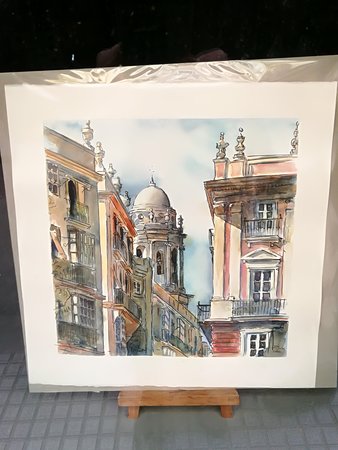
- How to create a shortcut to a website using chrome on a mac how to#
- How to create a shortcut to a website using chrome on a mac code#
- How to create a shortcut to a website using chrome on a mac Pc#
To start my checkmark project, I began by creating a prototype element as a place to test the tweaks I wanted to make. They will also be lost upon page refresh unless you enable persistent editing. HTML edits can be undone or redone using the normal Ctrl+Z and Ctrl+Y hotkeys. You can ensure your changes save by hitting Ctrl+Enter or simply clicking outside of the text box you are editing. Your first instinct may be to hit the Escape key, but this will back you out of editing while discarding your changes.

Telling DevTools that you are done editing can be tricky. By right-clicking on the HTML in the “Elements” tab and selecting “Edit as HTML,” you can make live edits to the markup of a webpage that Chrome will immediately render once you’re done editing. Once an element is selected, you can interact with it in all kinds of ways. You can locate the HTML of any element on the page by clicking on it. Chrome will also show you positioning and sizing information of elements as you hover over them. Once the inspector is active, you can locate the HTML of any element on the page by clicking on it. If you work regularly in a Linux environment, there’s a good chance you’ve used this shortcut on accident many times when you meant to copy text! The second, faster way is to use the keyboard shortcut Ctrl+Shift+C. First is to open DevTools with F12, select the “Elements” tab, and click the cursor icon in the top left. There are two quick ways to open the inspector.
How to create a shortcut to a website using chrome on a mac code#
Even though I am more comfortable working in our backend code than I am with CSS and HTML, I was able to easily implement these check marks with the power of live editing. While working on Lucidchart, one of my recent projects was to add some check marks into the inputs where users fill in their billing information in order to convey immediate feedback when the users entered properly formatted and valid information. This functionality allows any developer, even those with weaker HTML and CSS knowledge, to quickly prototype and iterate on potential changes to a web page. One of the most useful features of DevTools for web developers is the ability to live edit the HTML and CSS on a page.
How to create a shortcut to a website using chrome on a mac Pc#
So this way, you can show the missing My Computer or This PC icon on the Windows 11 desktop.Chrome DevTools is a powerful suite of web development tools built right into the Chrome browser.

A new window will open where you have to select the icons you want to display on the desktop and then click OK. In the Themes section, you have to click on the Desktop Icon Settings link.ģ. If you need to display icons such as This PC (My Computer), Recycle Bin, Control Panel, Network, and User Files, which include a folder (documents, downloads, OneDrive, pictures, videos, music, etc.), then:Ģ. Display system icons on the Windows 11 desktop

Now, the shortcut of this file will appear on the Windows 11 desktop.

The classic menu will appear, where select Send > Desktop (Create shortcut).ģ. Right-click on the required file and select “Show more options” from the context menu.Ģ. If you want to create a shortcut from any file. Now, drag it to the desktop, after which an application shortcut will be created.Ĭreate a shortcut to a specific file in Windows 11 Find the application you need in the list, left-click on it and do not release the button.ģ. Launch the start menu and tap on the top right corner on “ All Apps“.Ģ. If you need to add shortcuts to already installed programs in Windows 11, then:ġ. Create app shortcuts to the desktop in Windows 11
How to create a shortcut to a website using chrome on a mac how to#
In this article, we will discuss how to add application shortcuts to the Windows 11 desktop, how to create a shortcut to a separate desired file, and how to mark the necessary icons “This PC”, “ Recycle Bin“, “Control Panel”, “ Network” and “User files”.


 0 kommentar(er)
0 kommentar(er)
